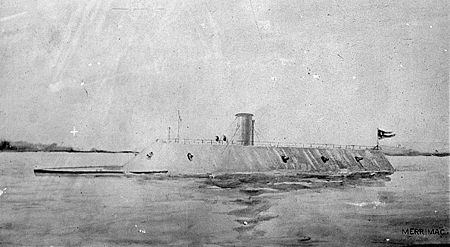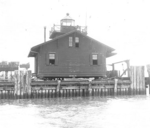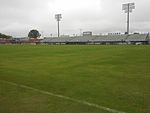CSS Virginia
1862 shipsBattle of Hampton RoadsIronclad warships of the Confederate States NavyMaritime incidents in May 1862Naval magazine explosions ... and 5 more
Scuttled vesselsShips built in Newport News, VirginiaShipwrecks of the American Civil WarShipwrecks of the Virginia coastUse American English from January 2018

CSS Virginia was the first steam-powered ironclad warship built by the Confederate States Navy during the first year of the American Civil War; she was constructed as a casemate ironclad using the razéed (cut down) original lower hull and engines of the scuttled steam frigate USS Merrimack. Virginia was one of the participants in the Battle of Hampton Roads, opposing the Union's USS Monitor in March 1862. The battle is chiefly significant in naval history as the first battle between ironclads.
Excerpt from the Wikipedia article CSS Virginia (License: CC BY-SA 3.0, Authors, Images).CSS Virginia
Portsmouth
Geographical coordinates (GPS) Address Nearby Places Show on map
Geographical coordinates (GPS)
| Latitude | Longitude |
|---|---|
| N 36.906944444444 ° | E -76.343611111111 ° |
Address
Portsmouth
Portsmouth
Virginia, United States
Open on Google Maps








